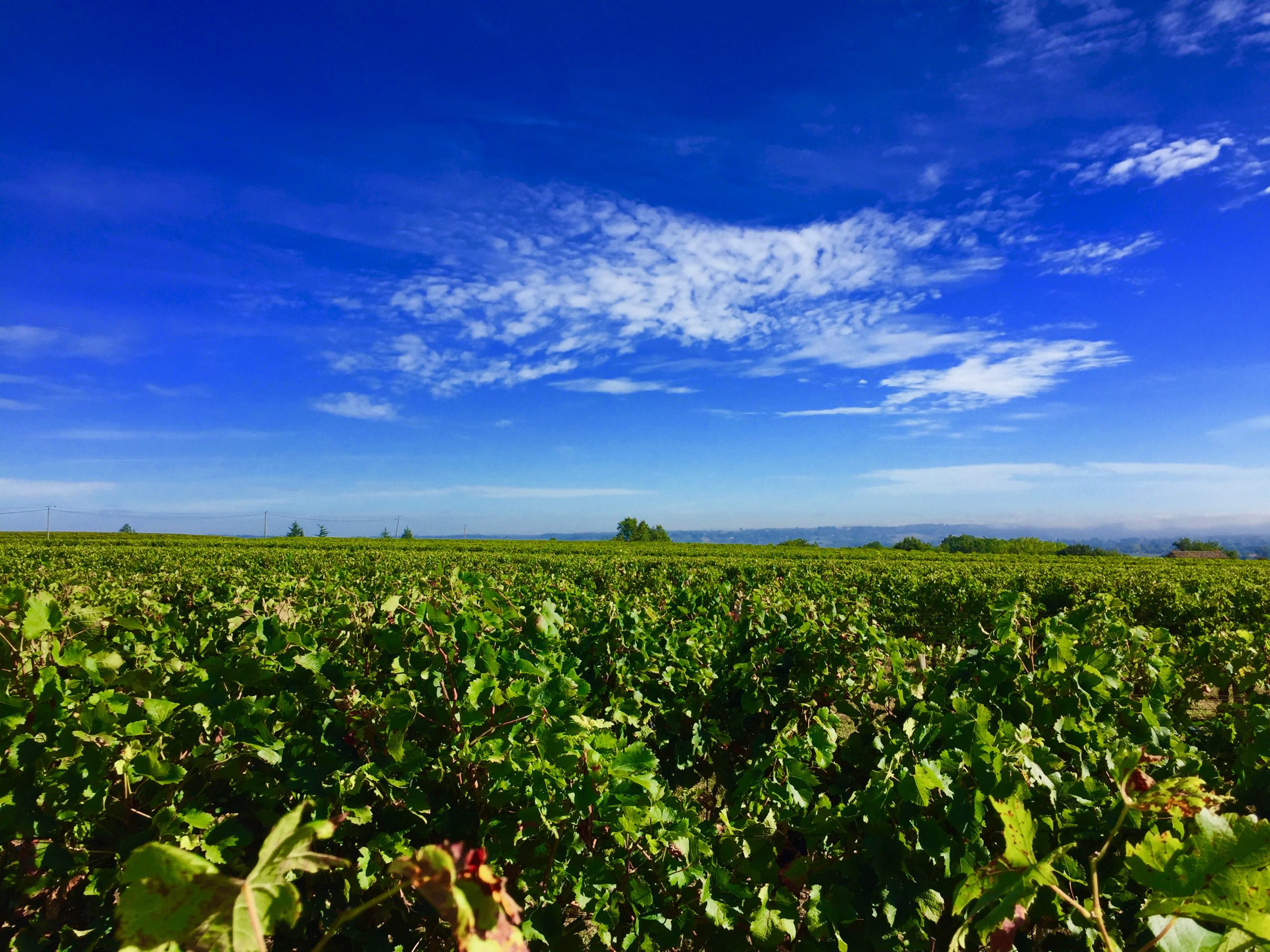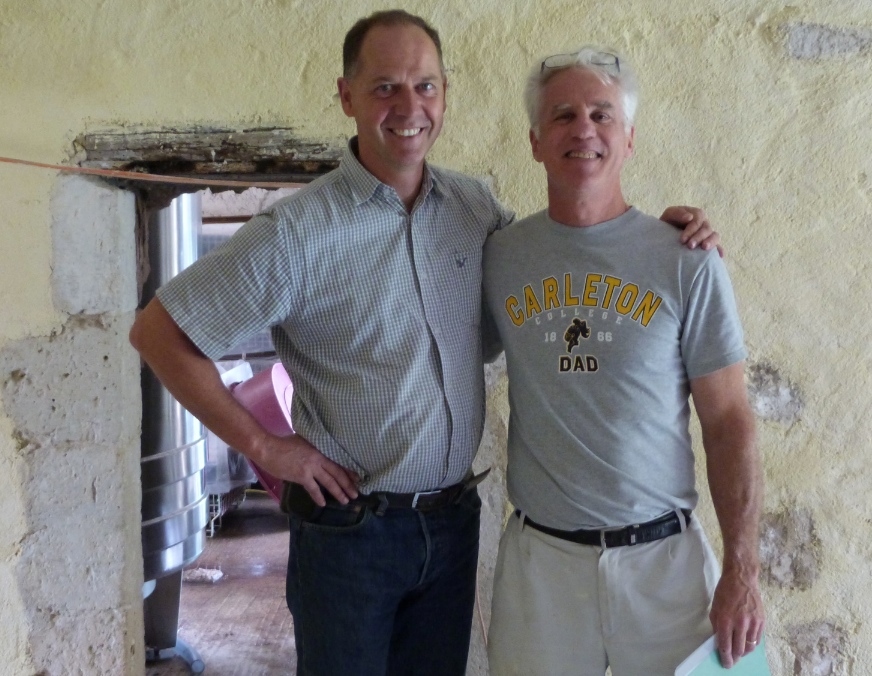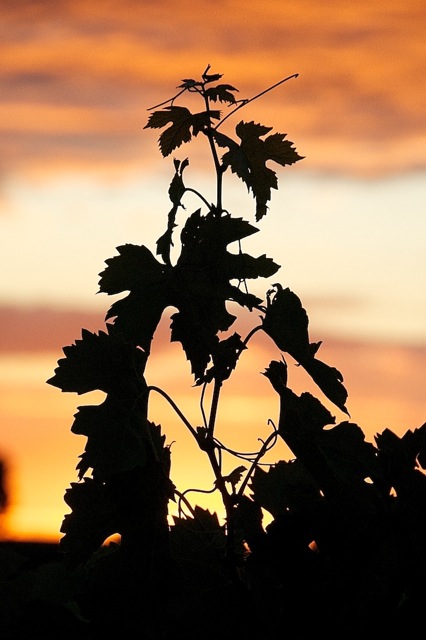Pressing Day came about a month after harvest.
October 17th. John was woken by a nightmare before the 5h30 alarm. Yesterday’s conversation with the farmer – he reminded us that every year workers die from asphyxiation inside wine vats, that he lost two relatives this way, and in one case the rescuer also died.
 Can’t dwell on that. Need to get up to the chai and drain the remaining 200 litres of “free run juice” (we can’t call it wine yet) out of the Cuve and into the Garde Vin (GdV) before the contractor arrives. 6h45 am, he’s here with his giant Press-on-Wheels, a pneumatic device which uses air, unlike a hydraulic press which rams steel against the fruit. We’re going for the gentlest pressing possible, extracting the last juice from the marc (the “pancake”) without crushing the bitter seeds.
Can’t dwell on that. Need to get up to the chai and drain the remaining 200 litres of “free run juice” (we can’t call it wine yet) out of the Cuve and into the Garde Vin (GdV) before the contractor arrives. 6h45 am, he’s here with his giant Press-on-Wheels, a pneumatic device which uses air, unlike a hydraulic press which rams steel against the fruit. We’re going for the gentlest pressing possible, extracting the last juice from the marc (the “pancake”) without crushing the bitter seeds.
There’s a lot of apparatus to set up in front of the tiny door of the Cuve while John pumps the “jus de presse” over to a borrowed vat (temporary quarters.) Even so, the Cuve is still a third full of marc and we have to free up space to allow an airflow between the front door and the tank lid to bring oxygen in against the carbonic gases. So we rake out enough of the marc – now an odiferous purple mass of stems, skins and seeds – to create a foothold. Then John crawls in and gets shoveling.
He says it’s a strange sensation, plunging into the dark Cuve, into the intense aroma of macerated fruit, a closed atmosphere reeking of fermented grapes and gas. The farmer said to keep a candle or lighter handy to warn if the oxygen gives way to CO2. Not sure how to do that while he’s up to his hips in marc and wielding a large rake. He pitches out to the roaring pump, but it’s an impatient thing; no matter how hard he works, it clamors for faster feedings. As he rakes and perspires it occurs to us that he is indeed pouring his sweat into this wine. Heaving skins and pits out the door he’s reminded they’ve been our friends in this venture, have valiantly done their part, well past harvesting. A month ago they were separated from the earth bound plants. Now they’re being separated from their juices on their way to the marc graveyard. He shakes his head, a bit dizzy, is this the gas talking? One great heave and the last load goes out to be squeezed of its’ virtues.
A contortionist’s manoeuvre and he’s back on the outside, startled by the sight of the remains.  It’s a comfort to know some will be allocated to the vineyard’s compost pile and then mixed with other organic refuse for fertilizer. Most will be deposited at the side of the road in an ignominious heap, collected by the local distillery and transformed into grain alcohol as a highly regulated offering to government coffers.
It’s a comfort to know some will be allocated to the vineyard’s compost pile and then mixed with other organic refuse for fertilizer. Most will be deposited at the side of the road in an ignominious heap, collected by the local distillery and transformed into grain alcohol as a highly regulated offering to government coffers.
One week later and it’s time for the next big event – the malolactic fermentation (MLF). For centuries vintners noticed their wine tasted better in the spring and assumed it was the warmer temperatures and passage of time. They didn’t know that actually a second fermentation takes place which transforms the strong malic acid into milder lactic acid, a crucial process that renders red wine supple, round, less acid and more micro-biologically stable. Today some vintners still count on the luck of having enough of the right “yeast” in their chai (cuves, walls or air) so that this transformation starts on its own. We’d like this too, but many folks get their enzyme boost, called “inoculation,” from the local wine pharmacy or a neighbor who is a few days ahead in the vinification journey. (A bit like borrowing a friend’s culture to make bread.)
4 days after inoculation our MLF begins. Unlike the first fermentation, evidenced by sound (gurgling) smell (Co2 released) and density measures, the MLF is a mysterious thing observable only by frequent lab analyses. After about 10 days the report says – “malic acid .1” – and it’s done. All rather anti climatic except for our pleasure in now officially calling it “wine.” Then an urgent message from the oenologue telling us to slam the brakes on the process or we’ll have too many volatile acids and/or the wrong kind of lactic bacteria which could degrade the wine months down the road when it’s too late to fix. We follow her instructions which entail cooling the tank, a precise dose of SO2 and regular soutirages to remove the sediment until chemical activity ceases and the volatile acids are under control.
Each “soutirage” – pumping the wine into another tank so we can remove the sediment at the bottom – takes a half day or more. And even though the sediment is “debris” we have to set it out in our special green refuse bin for measurement and removal by government authorities. The first time we see it we are astonished – nobody told us how beautiful this pasty deposit is! The texture of a fine, thick, velvety paint and the color of pink ice cream. We call John’s sister Claire who is an expert on just about everything in art and culture, and she tells us this stuff has a name, it’s called “lie de vin” and that it was their father’s favorite color.
We go back to cleaning the tank and think about John’s father, an artist and architect who died a few years ago. If he were here he’d take a paint brush to this living color instead of a shovel, and muse with us hopefully about the family wine we’ll be tasting next spring.




